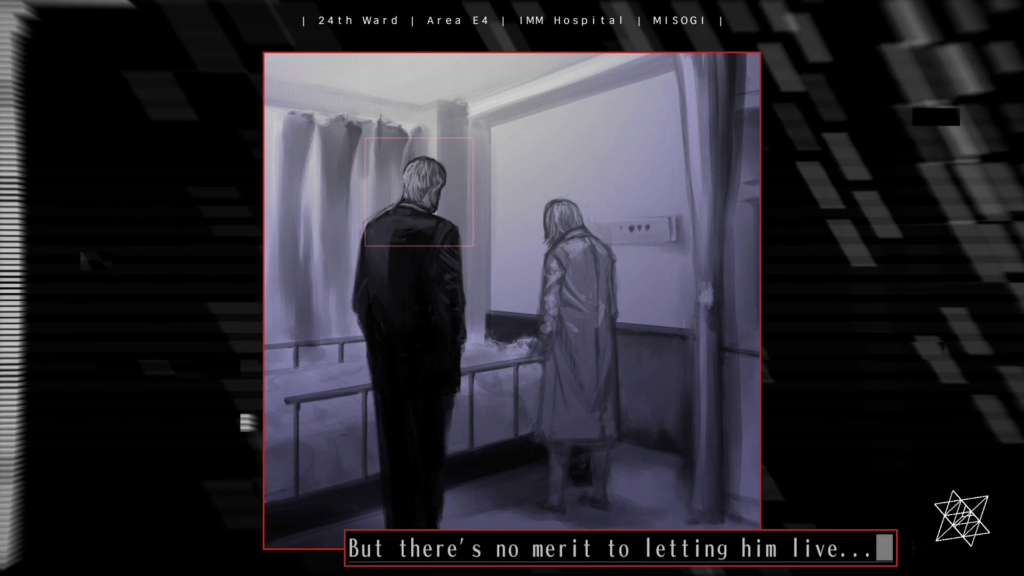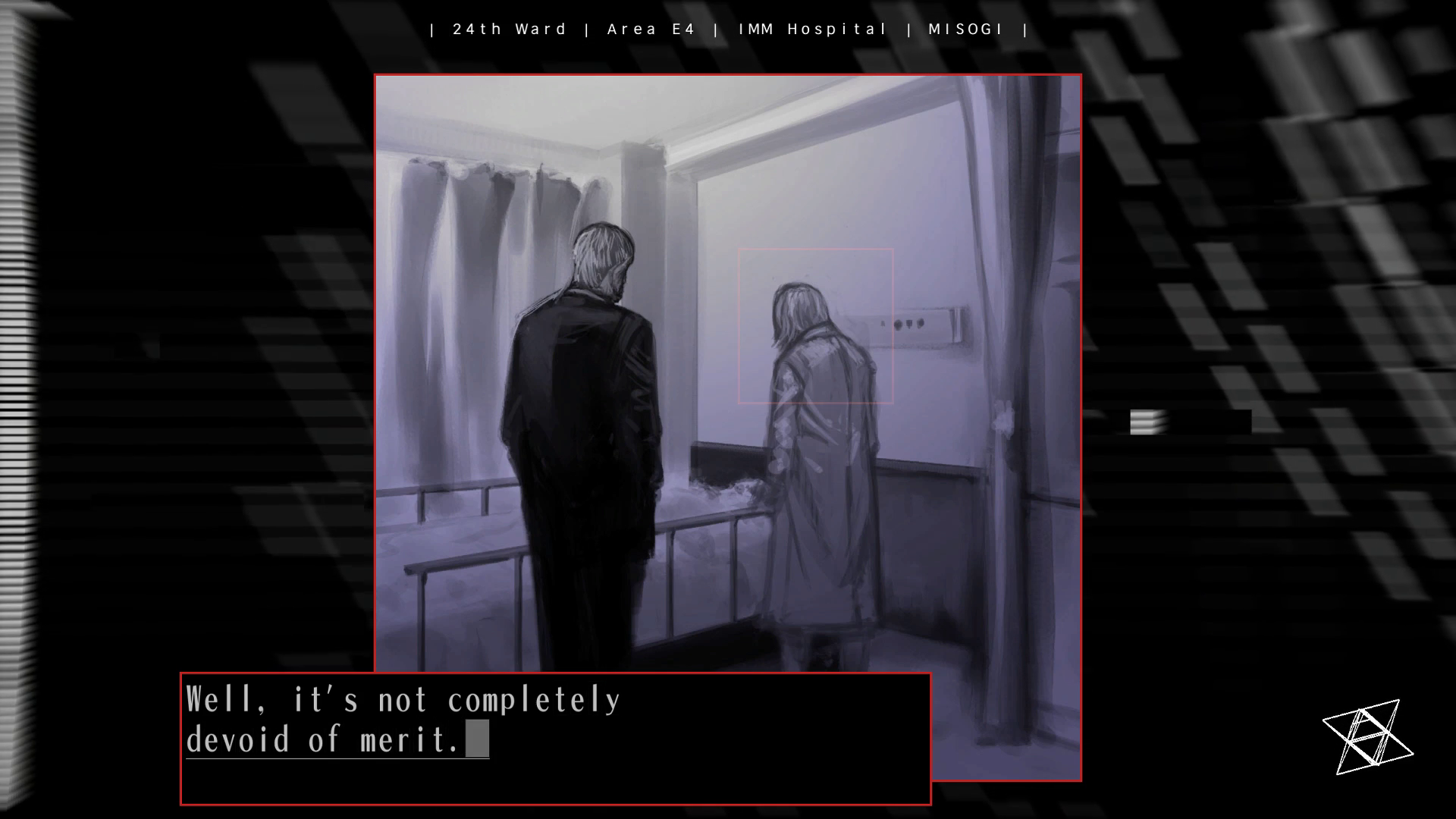In “LifeCut,” Kusabi calling Akira “Kamui” shows personal growth beyond his previous essentialist ideas of criminality and acknowledgment that it’s up to Akira, and by metaphor the player, to forge a better future for the young against the old men. “Kamui” is a role as a rebel that Akira, and in turn other Shelter Kids, can choose to adopt. In “SIZUKU” and “MISOGI,” faceless spies, hitmen, and doctors calling Tokio “Kamui” is an act of dehumanization. “Kamui” is an identity that the powerful like Kipple and Kinshiro force on the dispossessed. As Uminosuke deemed Tokio a worthless failure for refusing to death-file by murdering Akira, so too do Kipple and his allies, regarding him not as a person but as a commodity, as equipment:

KIPPLE: “[T]here’s no merit to letting him live…”


DOCTOR: “Well, it’s not completely devoid of merit. He can be reused as an experimental tool.”
The end of The Silver Case implies Tokio can cope with the remnant psyches, the awareness of the dead whom the powerful have victimized to build the 24th Ward, in order to keep moving forward into the new millennium. In “HIKARI,” when Kei Nanami shouts, “THERE IS NO ESCAPE” and tells him he will go insane, Tokio smiles and says, “Fuck off.” The ending is unironic. But, once again, in 2005 the hope and optimism of 1999 are gone. Realizing who he is and hearing the voices of the dead causes Tokio to attempt suicide, barely surviving only because Kipple rescues him to use as a “tape” against his political enemies under threat of death.
In “MISOGI,” reflecting on his lost friends, Tokio says, “I wiped my tears, called out some names. Slash, Meru, Red. It’s sad that none of these are their real names. ‘Red’ alone was at least a name I had decided on myself… Ayame, Kamui. Kamui is a fearsomely wild god. That’s how he felt to me.” He attributes the tragedy of his friends’ lives to “Ayame, Kamui.” Then he gouges out the silver eye he took from Uminosuke, permanently blinding himself to the supernatural as a symbol of rejecting authority’s attempt to erase his own identity, and apparently shoots himself to assert his own will rather than allow Kipple’s allies to “process” him.
Instead of having freedom and identity as the savior Kamui, Tokio has to claw his away toward the smallest iota of freedom very much in spite of Kamui. Tokio declares killing the past is impossible. Instead of finding light and hope, the only escape from the “cycle of crime, dehumanization and death” is suicide, at least in the original mobile version.
***